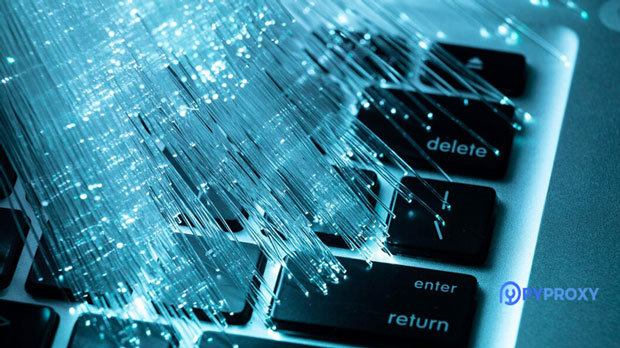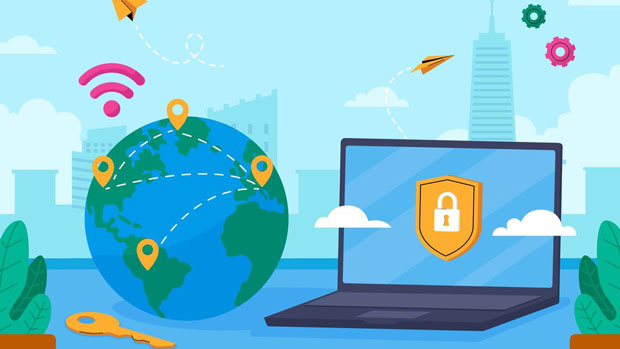When it comes to using proxy services for browsing, security, and anonymity, both PYPROXY and StormProxies are among the most commonly considered options. However, users often face a choice between these two, particularly when operating in wireless network environments. The performance of proxies in terms of latency and stability is crucial to the overall user experience, especially for tasks that demand high-speed internet connections and uninterrupted service. This article delves into a detailed comparison between Pyproxy and StormProxies, focusing on their performance under wireless network conditions. We will examine how each performs in terms of latency, stability, and reliability, shedding light on which service is more suitable for specific needs and scenarios. Understanding Proxy ServicesBefore diving into the specifics of Pyproxy and StormProxies, it is important to first understand what proxy services are and why they matter. A proxy server acts as an intermediary between your device and the internet. It hides your real IP address and routes your internet traffic through a different server. This process provides privacy and security benefits, allowing you to browse the web anonymously and access geo-restricted content.There are several types of proxies, including residential proxies, datacenter proxies, and mobile proxies. Both Pyproxy and StormProxies are popular services in the proxy industry, offering various options for different needs.Pyproxy: An OverviewPyproxy is a versatile proxy service that provides both HTTP and SOCKS proxies. It is known for its ease of use, with a simple interface that allows users to set up and configure proxies without much hassle. One of the main selling points of Pyproxy is its extensive network of proxies, providing access to a variety of locations worldwide. This makes it a great option for users who need to switch between different regions frequently.In wireless network environments, Pyproxy stands out due to its lower latency and relatively stable connection. The service uses multiple proxy servers, which ensures that users can find a nearby server to minimize connection delay. This reduces the risk of lag and slow speeds, making it a viable option for tasks like web scraping, streaming, and browsing in wireless environments.StormProxies: An OverviewStormProxies, on the other hand, is another reputable proxy provider that specializes in rotating residential proxies. This type of proxy is particularly useful for tasks such as SEO tools, sneaker bots, or other applications requiring frequent IP rotation to avoid detection or bans. StormProxies offers an easy-to-use system and focuses on providing high anonymity and a large pool of rotating IPs.When it comes to wireless network usage, StormProxies also offers good performance, with a focus on low latency and reliability. The key feature of StormProxies is its rotating proxy system, which ensures that users are always using fresh IP addresses, thereby maintaining high anonymity levels.Latency: A Key Factor in Wireless NetworksLatency refers to the time it takes for data to travel from the source to the destination and back. In the context of wireless networks, latency is crucial because the speed of your internet connection is heavily influenced by the time it takes to send and receive data packets.Both Pyproxy and StormProxies offer low-latency connections in wireless environments, but their performance may differ based on the proximity of the proxy server and network congestion. Pyproxy tends to perform slightly better in this regard due to its network optimization, with a focus on minimizing delays even in crowded wireless networks. This makes Pyproxy a better choice for users who need a fast and responsive proxy for tasks that require real-time interactions, such as gaming or video streaming.StormProxies, while reliable, can sometimes exhibit slightly higher latency, especially when using its rotating proxy system. The process of rotating IPs can introduce brief delays as new connections are established. However, this is generally not a significant issue for most users, unless extremely low latency is required for specific tasks.Stability: Ensuring Consistent PerformanceStability is another important factor to consider when choosing a proxy service, especially in wireless network environments. Wireless networks are inherently less stable than wired networks, as they are subject to interference, signal strength fluctuations, and other factors that can affect performance.Pyproxy excels in stability, largely due to its robust infrastructure and multiple proxy servers. Even if one server experiences issues or goes offline, Pyproxy is able to quickly redirect traffic to another server, ensuring minimal disruption to the user experience. This makes it a solid choice for tasks that require uninterrupted performance, such as accessing critical web services or maintaining a consistent browsing experience.StormProxies, while also reliable, can face occasional stability issues, particularly when the system is under heavy load. The rotating proxy system, while beneficial for anonymity, can cause brief interruptions in service as the IP addresses change. However, for most users, this will not cause significant disruptions unless they are using the service for high-volume tasks or require constant uptime.Comparison of Performance: Pyproxy vs. StormProxiesTo summarize the key differences between Pyproxy and StormProxies:- Latency: Pyproxy generally offers lower latency compared to StormProxies, making it a better option for tasks that require fast response times, such as gaming or video streaming.- Stability: Pyproxy has a more stable infrastructure, which ensures that users experience fewer disruptions, especially in wireless network environments. StormProxies can experience slight instability due to its rotating proxy system, though it remains reliable overall.- Proxy Rotation: StormProxies excels in providing rotating residential proxies, which is ideal for anonymity-sensitive tasks. Pyproxy offers more traditional proxy services but may not provide the same level of anonymity as StormProxies.Conclusion: Which Proxy is Better for Wireless Networks?Both Pyproxy and StormProxies offer reliable services, but the best option depends on your specific needs. If you prioritize low latency and stability in a wireless network environment, Pyproxy is likely the better choice due to its optimized infrastructure and robust server network. However, if you need rotating IPs for high anonymity, StormProxies would be the better fit, despite potentially higher latency and occasional stability issues.In the end, the decision between Pyproxy and StormProxies should be based on your specific requirements, including the type of tasks you intend to perform, your budget, and the importance of latency and stability in your wireless network environment.
Oct 13, 2025



































































